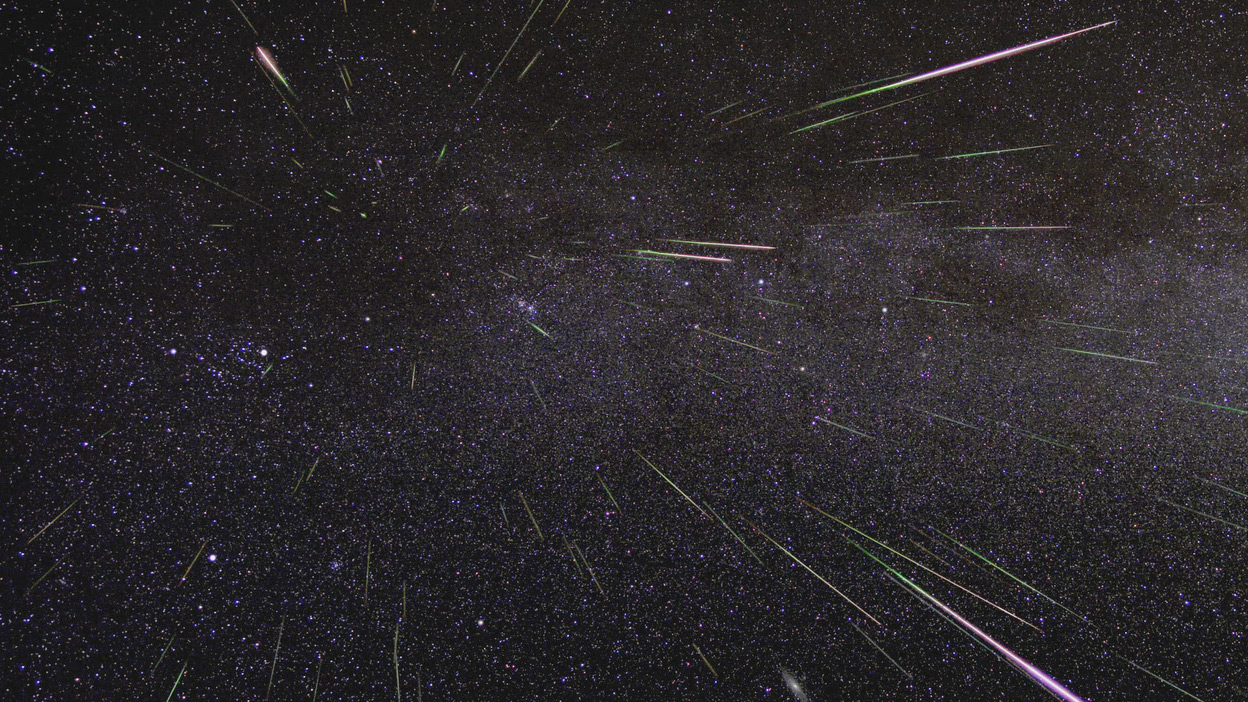The annual Perseid meteor shower is probably the greatest of the year. This meteor shower is characterized by lots of bright meteors, often showing off persistent trains. With its occurrence during hot summer nights, it often times will coax most armchair-bound astronomers and sky enthusiast out under the stars.
But before you get up out of that comfy chair, here’s a warning. This year’s meteor shower will also be accompanied by a bright waning crescent Moon. The Last Quarter Moon occurs the day before the peak of the Perseids. But despite the bright Moon, observers still may see upwards of 40 meteors per hour.

The Perseid meteor shower peaks on Wednesday, August 12, but it’s always a good idea to look for meteors a few days before and after the peak. The best time to look for meteors is between midnight and dawn. Perseid meteors appear to radiate from a point near the star Eta Persei in the constellation Perseus. The radiant is actually an optical illusion. Perseid meteoroids enter Earth’s atmosphere more or less parallel to one another but, seen from a distance, they appear to converge to a point just as the parallel tracks of a railroad appear to converge to a distant point on the horizon.

Perseids tend to be fairly bright with long, persistent trains. They enter Earth’s atmosphere at about 135,000 miles per hour and “burn up” at between 60 and 70 miles altitude. This combination of brilliance and swiftness often gives observers the impression that the meteors are sweeping past close to the ground.

Comet 109P/Swift-Tuttle is the reason behind the Perseid meteor shower. When comets travel near the Sun in their orbit, they begin to heat up. As they heat up, their icy surfaces begin to sublime releasing vast amounts of dust. Each year Earth plows through the dusty rubble left behind by Comet Swift-Tuttle causing these tiny specks of debris to incinerate as they enter the atmosphere. Comet Swift-Tuttle takes 133 years to orbit the Sun. It last visited Earth in 1992 and is due to return in the year 2126.
Observing the Perseids could not be easier. Simply lie back in a lawn chair and concentrate on an area of sky approximately 45° from the radiant and about the same distance above the horizon. Start observing after midnight. This allows Earth to turn into the meteor stream and the radiant to climb higher. No telescope or binoculars required, just your eyes.
Because of the fairly bright Moon this year, you may want to face away from the radiant or place yourself into the shadow of a house, barn, or some other structure to block the moonlight. The meteors will radiate outward from Perseus in all directions and can appear in any part of the sky. Placing yourself away from city lights will also increase your chances of observing more meteors.
Meteor showers can be unpredictable which is why it’s always good to bring along something to drink, and some snacks to help pass the night. And by the way, it’s always fun to bring along a friend so you can both take in the beauty of the night sky and enjoy “showering” together.
Enjoy! And Keep Looking Up!
(The featured time-lapse image shows an outburst of Perseid meteors in August 2009. – Image Credit: NASA/JPL)

I’ve tried a few times to view the Perseids, but light pollution has been a frequent obstacle. The one time I did get to see some meteors, they seemed to disappear in the blink of an eye. Is that normal?
LikeLiked by 1 person
Yes….meteors are only blips of light that streak across the sky in a fraction of a second….some leave long trains that can last several seconds.
LikeLiked by 1 person
Ok, good to know. I wasn’t sure if the short duration was due to light pollution.
LikeLiked by 1 person
Light pollution will most certainly drown out the fainter meteors that would typically be seen from a dark site away from city lights. But even this year’s Moon will drown out some of those fainter meteors too. So one could be fighting a “double edged” sword this year.
LikeLike